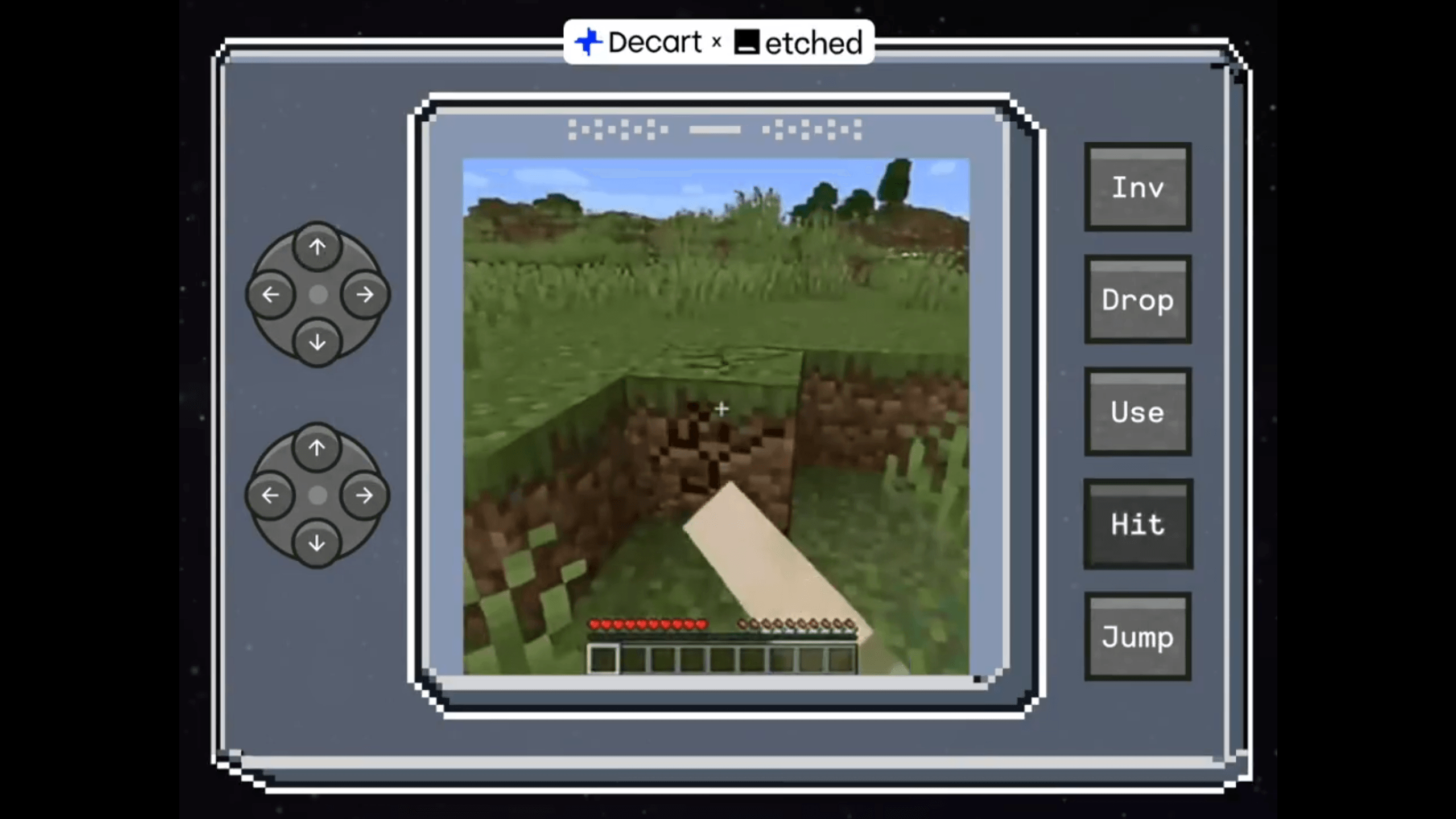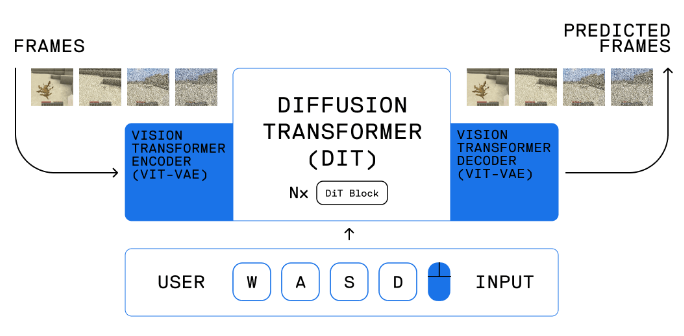AI-generated game Oasis now turns images into playable 3D worlds

Key Points
- AI startup Decart has unveiled "Oasis," a video game created entirely in real time by generative AI that allows players to explore a Minecraft-like world, interact with objects, and engage with the environment.
- Oasis uses a specialized Transformer architecture that generates images at 20 frames per second with "zero latency" and responds instantly to player input.
- While current limitations include blurry images and imprecise inventory management, Decart and development partner Etched plan to address these issues by using larger models and dedicated AI hardware. The model and a demo are available for testing.
Update –
- Added Custom Worlds Update
Update November 4, 2024:
Decart AI has released an update to its Oasis AI game generator that allows users to upload their own source images for the AI to turn into playable game worlds. The new feature, called "Custom Worlds," is a step toward the company's goal of turning any image, including real-world photos, into interactive environments.
Video: Decart via X
In its current proof-of-concept version, the generated worlds tend to lose their resemblance to the original image very quickly. Decart AI says it plans to improve this in future versions. The company stresses that Oasis is still in the early stages of development, and Custom Worlds offers a first look at what the technology can do.
Original article published November 1, 2024:
"Oasis" is the first real-time AI-generated game that is playable in any significant way
AI companies Etched and Decart have built "Oasis," a fully AI-generated video game that runs in real time.
The game lets players move, jump, collect items, and break blocks in an environment similar to Minecraft. According to Decart, their system processes player inputs instantly to create gameplay elements, including physics, rules, and visuals.
Video: Decart
The system's speed stands out compared to other AI video generators. While models like OpenAI's Sora or Runway Gen-3 need 10–20 seconds to create one second of video, Oasis generates 20 frames per second with "zero latency"—a new frame every 0.04 seconds.
Decart says Oasis uses custom AI architecture based on Transformer technology. Unlike other models, it can create images instantly and respond to player actions. The system combines Vision Transformer technology with a diffusion model for image processing, letting players control the game with standard WASD keys and mouse input.

One challenge in generating a continuous game world with AI is maintaining consistent, high-quality visuals over time. Small errors can accumulate with each new frame, leading to a blurry or distorted image.
By comparison, Google DeepMind recently created an AI system that can simulate Doom, but only for three-second intervals. Oasis still has limitations, including blurry distant objects, inconsistent object rendering, and inventory control issues.
To improve this, the Oasis developers used a technique called "dynamic noising". Essentially, they intentionally add some randomness or "noise" to the image data in the early stages of generating each frame.
This helps prevent errors from building up and becoming noticeable. Then, as the AI model refines the image, this artificial noise is gradually removed. This allows the model to fill in sharp details while maintaining consistency with previous frames. The key is that the AI was exposed to this type of noise during its training process. It has learned how to deal with the noisy data and still produce a clean final result.
The road ahead
Decart believes larger models and datasets will fix many current problems. Their partner Etched is developing a specialized AI chip called Sohu, designed to handle larger models with up to 100 billion parameters in 4K resolution.
Currently, Oasis runs on H100 GPUs at 360p resolution. Decart says operating costs are "much cheaper than what a user pays for an average hour of a Steam Game," though this comparison isn't entirely clear since Steam games typically have one-time purchase prices rather than hourly rates. Decart seems to be estimating the Steam cost per hour based on average playtime and game prices.
Decart and Etched have released the code and weights for a 500-million-parameter model on GitHub that can run locally on GitHub, along with a playable demo of a larger version.
Venture capital firm Sequoia Capital, which led Decart's $21 million seed funding round, sees major potential in the project. "Today’s launch of Oasis, powered not by a gaming engine but by a single AI model trained on videos, marks a milestone in inference," Sequoia stated.
AI News Without the Hype – Curated by Humans
As a THE DECODER subscriber, you get ad-free reading, our weekly AI newsletter, the exclusive "AI Radar" Frontier Report 6× per year, access to comments, and our complete archive.
Subscribe now